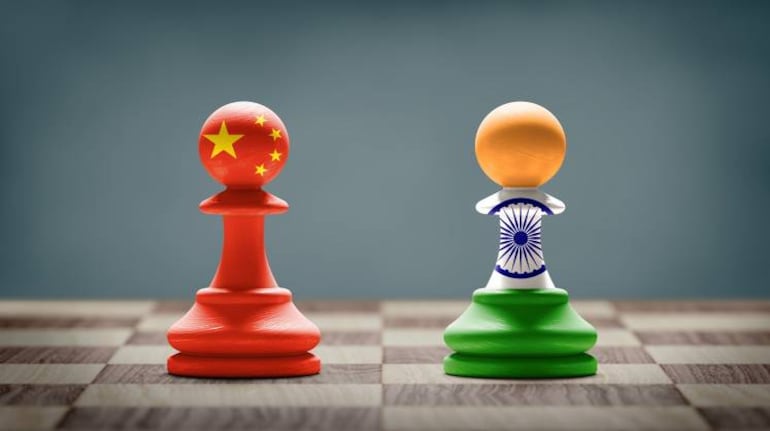



War games carry many lessons for force mobilisation, weapons testing, and strategic posturing. In Beijing’s war games in the Taiwan Strait earlier this month, China may not have gone the whole hog against Taiwan, but it did hit the oceanic waters in its north, south and west. Chinese planes and missiles crossed the median line several times, something that was not done in past. However, while these may be distant drills, India’s policy-makers may still like to draw inferences for better management of futuristic Chinese offensives like frequent transgressions across the Line of Actual Control (LAC).
Critics may pooh-pooh the linkage between the two theatres since continental conflicts like the one near the LAC in the Galwan Valley are different from the maritime conflicts in the Taiwan Straits. However, Chinese People’s Liberation Army (PLA) is undergoing planned stages of modernisation to improve upon capabilities and proficiencies across all warfare domains so that as a joint force it can conduct land, air, and maritime operations. Further, China is a global leader in conducting unilateral and bilateral war games. Therefore, the Taiwan Straits war games being a ‘distant issue’ is irrelevant since every war game has some lessons for participating, as well as observing armed forces.
In the recent war games, China displayed a quick, large, and lethal air and maritime force mobilisation, pushing the war meters up in the Taiwan Straits. However, at least in the near future, Taiwan Straits may not metamorphose into a war zone since China is still not assured of a decisive victory despite mobilising ‘a million men to swim’ against Taiwan. Additionally, there is a reasonable prospect of such a war spilling over into a regional war. Therefore, China may use the peripheries with its adversaries such as the LAC to replicate the lessons learnt in Taiwan Straits.
At least three derivative lessons come to the forefront. First, China may not go for full-fledged war against India. Instead, it may instigate localised wars with limited territorial targets. A look into China’s territorial transgressions across the entire LAC makes one thing clear: it is targeting the whole arc for nibbling small portions of land with a strategy of ‘capture some, retreat some, negotiate some, and try to retain some’.
Second, China has displayed effective use of its airpower in the just-concluded war games. Whether it was the Russian-built Sukhois or the domestic J Series fighter planes, the aerial performances were as per exceptional benchmarks. So was the case with the multiple range of missiles. In the process, it did emerge that China may bank heavily on superior air power for futuristic transgressions across the LAC.
Third, China displayed the capabilities to enforce an air and sea blockade to Taiwan. Taiwan’s air traffic was badly affected by the Chinese military drills. The international commercial cargo in the adjacent waters was also affected. It would be prudent to proliferate the lessons by contextualising the same near LAC where the Chinese are looking for vulnerable soft spots like the Siliguri Corridor or the Chicken’s Neck in West Bengal.
Unlike the Taiwan crisis, the LAC is a bilateral problem, and external players are not likely to support beyond hollow statements. Also, there has been a definite shift in Chinese strategic objectives under President Xi Jinping. China is no more a satisfied party vis-à-vis India and would, in all probability, continue to play the teasing game of regular transgressions across the LAC. Unfortunately, unlike the Taiwan Straits, where enough academic research has been conducted along with simulated wars between China and Taiwan, the Sino-Indian conflict remains grossly under-researched. We do not have simulated war models being iterated in different conditions to generate original data about war probabilities, and outcomes.
Handling China’s increasing military prowess has always been a policy challenge for India. While commendable domestic efforts have enhanced India’s combat resilience vis-à-vis the PLA, supplementary tactical threads from distant war games would be helpful. The ongoing digital explosion on a very wide level can fetch healthy details about the combat performance of many weapons, and combat platforms. These data can facilitate combat sizing and simulated war exercises on the China front. Probably, there lies some space for better deterrence against the PLA’s frequent LAC intrusions.
Bhartendu Kumar Singh is in the Indian Defence Accounts Service. Views are personal, and do not represent the stand of this publication.
Discover the latest Business News, Sensex, and Nifty updates. Obtain Personal Finance insights, tax queries, and expert opinions on Moneycontrol or download the Moneycontrol App to stay updated!
Find the best of Al News in one place, specially curated for you every weekend.
Stay on top of the latest tech trends and biggest startup news.